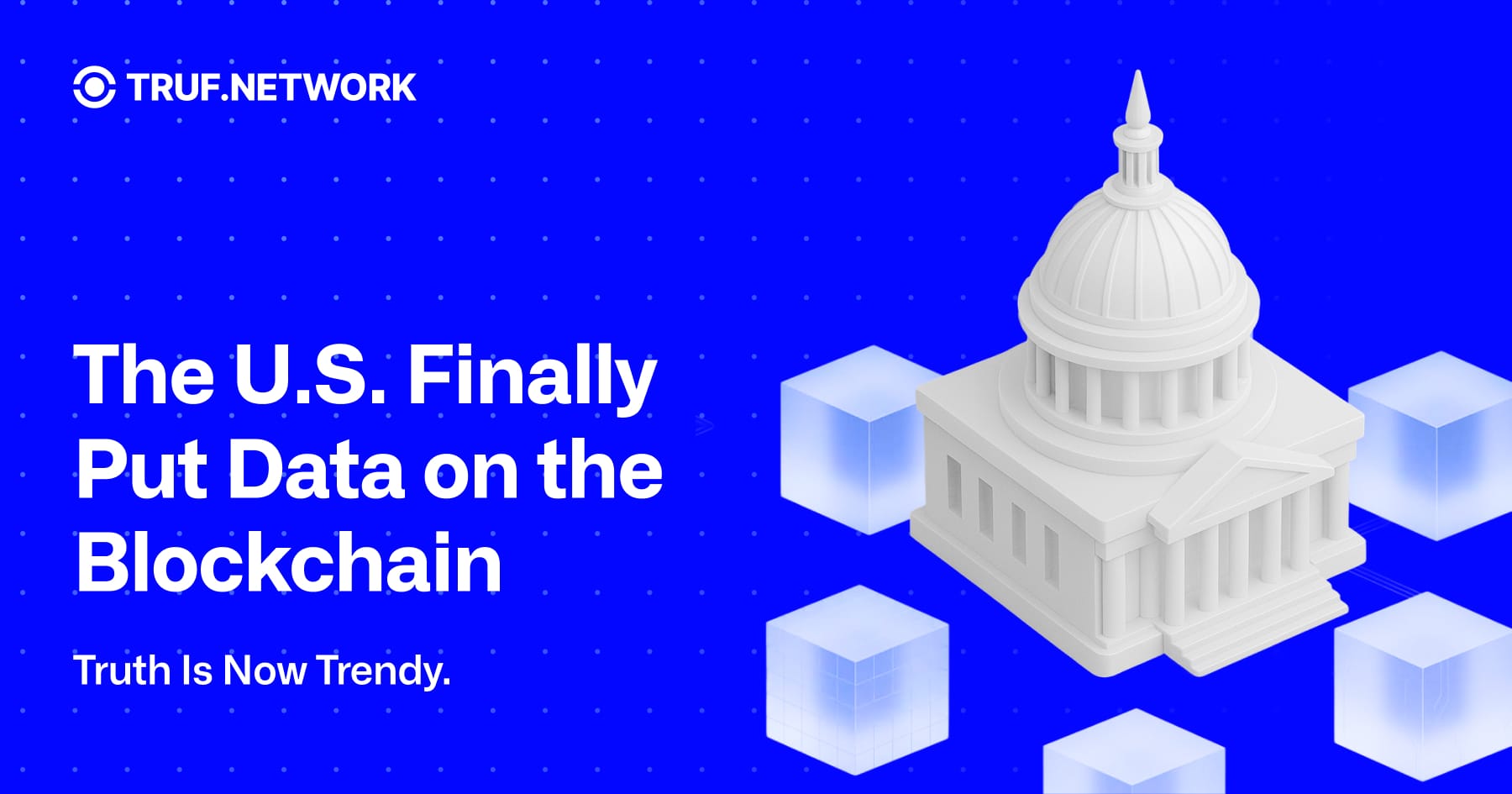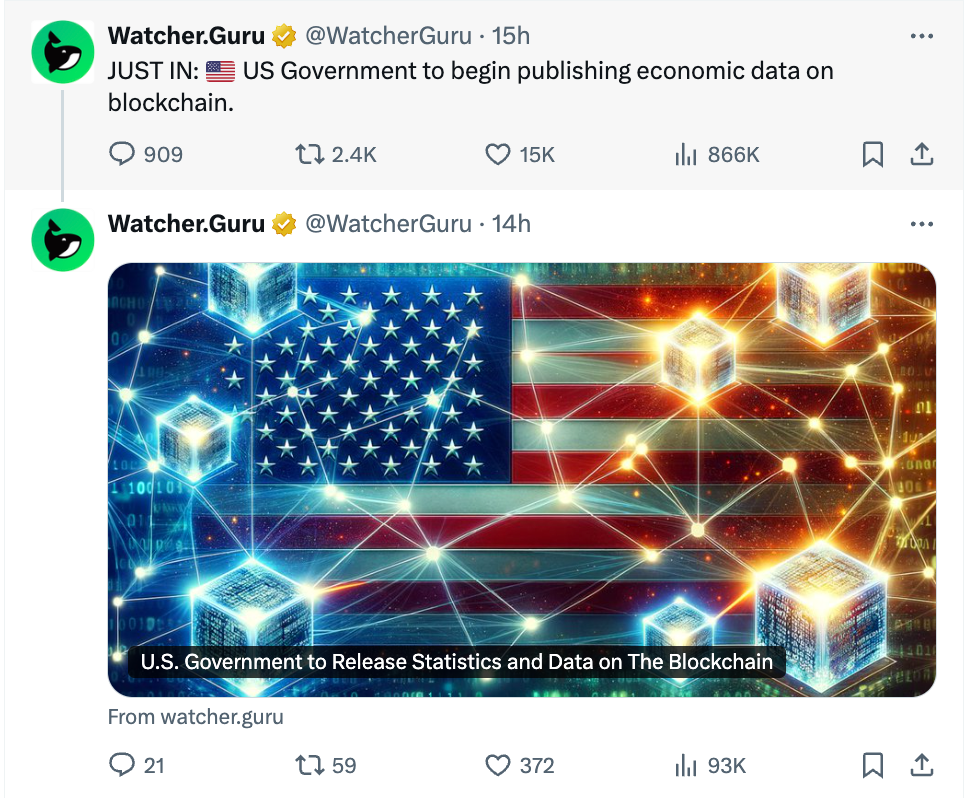The U.S. Finally Put Data on the Blockchain. Truth Is Now Trendy
Official numbers are going on-chain, and that’s shorthand for “data you can trust, bake into code, and actually build with." (Spoiler: We’ve been doing this since before it was called “cutting-edge.”).

Day 92 or 100 Days of TRUF
Picture this: Crypto Twitter perked up when Watcher.Guru’s post about the U.S. Government putting economic data on blockchain racked up nearly 900,000 views. Not quite viral cat-video numbers, but enough to show that this isn’t just another policy footnote; people are paying attention.

Why Real-Time, Verifiable Numbers Matter
Forget analog fog. Investors and policymakers aren’t dealing in paper today, they need claw-your-eyes-out accuracy.
- When a national stats office overstated UK inflation by 0.1 percentage points (from 3.5% to 3.4%) that slight quirk still rattled financial markets and policy expectations. Financial Times
- In New Zealand, lagging quarterly CPI forced the central bank to prematurely cut rates, throwing markets into a tailspin. Reuters
- And in the U.S., firing the BLS chief raised alarms about whether $2.1 trillion in TIPS markets were now built on shaky math. Investors started eyeing private data alternatives. Reuters
If data isn’t timely and trustable, policy misfires aren't just embarrassing, they cost money.
Missed data does more than just trip up central bankers; it erodes trust across the whole system. Which is exactly why prediction markets, fueled by transparent data, have become such powerful reality checks.
Prediction Markets + Truth = A Match Made in Chaincode
Prediction markets are more than gambling, they're collective insight engines. Kelshi users, for instance, beat big firms at predicting Fed interest rate moves, because they had access to timely, trusted info. Marketwatch.com
Once inflation stats go on-chain and are auditable, those markets become even more powerful.
TRUF.NETWORK - Still the Quiet Reality in All This
Here’s the low-key flex: while everyone starts tossing data onto distributed ledgers, TRUF.NETWORK has already been doing it, at scale.
- Truflation delivers inflation indexes from 100 million+ data points across 100+ sources, daily.
- Nuon.fi uses that data to mint a stablecoin that actually resists inflation.
- Index.fun lets anyone build and trade wild and whacky prediction indexes based on the truth, not guesswork.
The infrastructure for transparent, programmable, reliable economic data isn’t a demo, it’s live.
Why This (Slow-Motion) Revolution Matters
- Governments and policymakers get cleaner credibility.
- Builders and investors get rails to build predictable markets and tools.
- AI platforms and policy dashboards gain trust architecture, because if data is open, verifiable, and immutable, you can’t spin it.
What’s Next?
Whether you’re running a central bank, a fintech startup, or an AI model, the future depends on data you can’t argue with.
The blockchain turns abstract numbers into receipts; proof you can check, trust, and build on.
And apparently, even governments are starting to agree. We know it first-hand: we’re already working on ingesting government data (more on this soon!).
